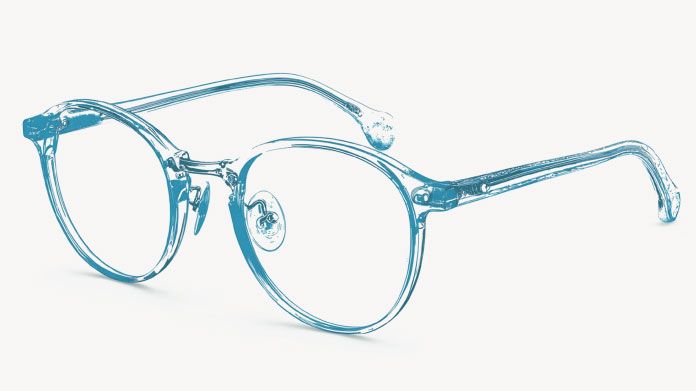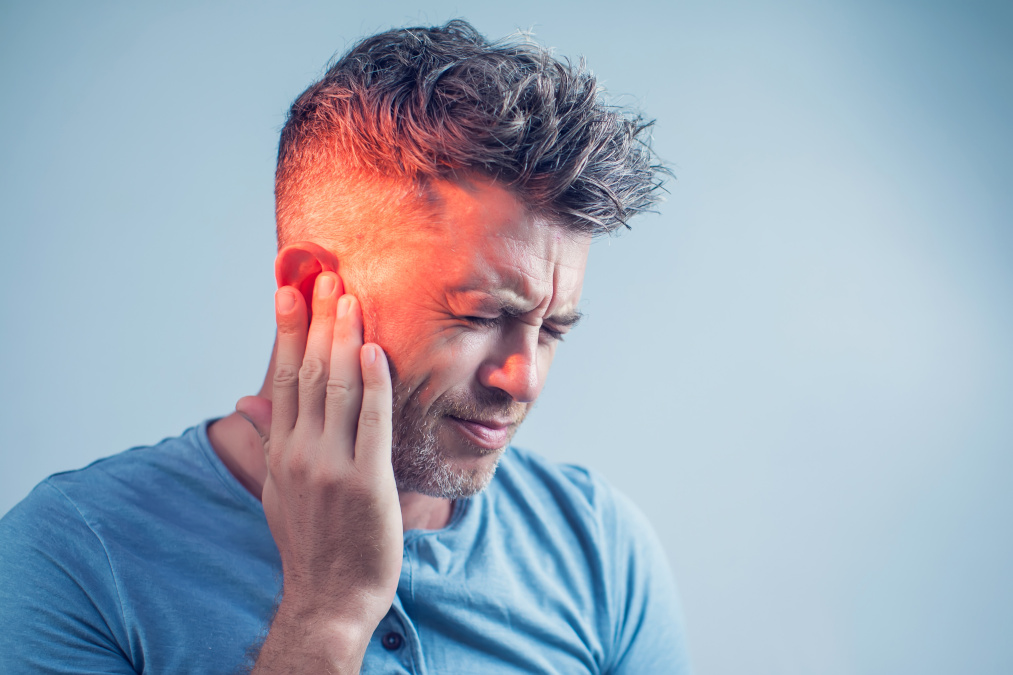AMD - an orange a day protects against this eye disease. Why do you think that is?
People who regularly eat fresh oranges have a significantly lower risk of developing age-related macular degeneration (AMD), an incurable disease affecting a tiny area of the retina at the back of the eye.

Scientists at Australia’s Westmead Institute for Medical Research monitored around 2000 people for over 15 years and found that daily consumption of oranges was associated with a 60% lower risk of developing the disease 15 years later. While oranges may not have ‘magic powers’, it seems some of their components do have powerfully protective properties.
"The data shows that it is the flavonoids found in oranges which are responsible for this protective effect", said study author Professor Bamini Gopinath. "Flavonoids are powerful antioxidants found in many fruits and vegetables. They offer anti-inflammatory benefits for the immune system."
In fact these compounds, which help to keep plants healthy and are responsible for the yellow, orange red and purple colours of the various plant parts (1), exert a wide range of biological activity:
- A powerful antioxidant action. As a result of one of their highly reactive group, flavonoids are able to inactivate and stabilise oxidising agents (2-6). They thus protect nucleic acids, prevent the harmful mutations responsible for various forms of cancer, and inhibit carcinogenesis, angiogenesis and cell proliferation (7).
- An anti-inflammatory effect. Flavonoids also inhibit the principal inflammatory enzymes cyclooxygenase (8) and lipoxygenase (9-11).
- Protection for blood vessels. They have a beneficial effect on blood vessels by maintaining optimal vascular permeability (12), and are indeed used for treating chronic venous insufficiency (13).
- Anti-ulcer properties. Flavonoids also protect the gastric mucosa from various ulcer-inducing agents (14).
- An anti-cataract effect. In addition to helping prevent AMD, flavonoids also offer protection against cataracts by neutralising aldose reductase in the lens.
What’s certain is that it’s important to ensure they are from natural sources (such as those contained in FlavoLife and Grapefruit Extract 99 % naringin). Drinks such as red wine, tea and coffee contain substantial amounts of flavonoids, though it’s Citrus drinks, including orange, which are the best for providing flavonoids.
Which other supplements can help prevent AMD?
Age-related macular degeneration affects those over 55 in particular. It leads to vision problems, with sufferers potentially losing the ability to recognise faces ...Over the last few years, two compounds have been shown to be beneficial for combatting AMD:
-
Lutein. This is one of three carotenoid pigments present in high concentrations in the eye, specifically in the macula
. Long-term supplementation with lutein has been shown to increase macular pigment density in both healthy subjects (17) and those with AMD (18-19), which slows down the progress of macular degeneration (20-21).
In the two most relevant studies (which lasted over a year), the dose used was 10-20mg/day of Lutein 20 mg (ie, one capsule). Scientists believe lutein acts both by neutralising the oxidising agents which damage the retina (antioxidant effect) and by filtering the blue light which attacks the eye’s photoreceptors. - Oligomeric proanthocyanidins (OPC). Several clinical trials suggest that oligomeric proanthocyanidins from red grape seeds or maritime pine bark (used to produce the excellent supplement Eye Pressure Control) are effective at protecting the eyes from the oxidation and glare that contribute to AMD (22). And OPC just happen to be ... flavonoids.
Bamini Gopinath Gerald Liew Annette Kifley Victoria M Flood Nichole Joachim Joshua R Lewis Jonathan M Hodgson Paul Mitchell. Dietary flavonoids and the prevalence and 15-y incidence of age-related macular degeneration. American Journal of Clinical Nutrition, 2018 DOI: 10.1093/ajcn/nqy114
References
- Havsteen BH (2002) The biochemistry and medical significance of the flavonoids. Pharmacol Therap 96: 67-202
- Bors W, Michel C, Stettmaier K (1997) Antioxidant effects of flavonoids. Biofactors 6: 399-402
- Cao G, Sofic, E, Prior RL (1997) Antioxidant and prooxidant behavior of flavonoids: structure-activity relationships. Free Radic Biol Med 22: 749-60
- Korkina LG, Afanas’ev IB (1997) Antioxidant and chelating properties of flavonoids. Adv Pharmacol 38: 151-63
- Miller AL (1996) Antioxidant Flavonoids: Structure, Function and Clinical Usage. Alt Med Rev 1996 1 (2): 103-11
- Montoro P, Braca A, Pizza C, et al. (2005) Structure–antioxidant activity relationships of flavonoids isolated from different plant species. Food Chem 92: 349-55
- Rice-Evans C (2001) Flavonoid antioxidants. Curr Med Chem 8: 797-807
- Laughton MJ, Evans PJ, Moroney MA, et al. (1991) Inhibition of mammalian 5-lipoxygenase and cyclo-oxygenase by flavonoids and phenolic dietary additives: Relationship to antioxidant activity and to iron ion-reducing ability. Biochem Pharmacol 42 (9): 1673-81
- Redrejo-Rodriguez M, Tejeda-Cano A, Pinto MC, et al. (2004) Lipoxygenase inhibition by flavonoids: semiempirical study of the structure–activity relation J Mol Struct: THEOCHEM 674 (1-3): 121-4
- Sadik CD, Sies H, Schewe T (2003) Inhibition of 15-lipoxygenases by flavonoids: structure–activity relations and mode of action. Biochem Pharmacol 65 (5): 773-81
- Yeon SC, Hyon GJ, Kun HS, et al. (2001) Effects of naturally occurring prenylated flavonoids on enzymes metabolizing arachidonic acid: Cyclooxygenases and lipoxygenases. Biochem Pharmacol 62 (9): 1185-91
- Youdim KA, McDonald J, Kalt W, et al. (2002) Potential role of dietary flavonoids in reducing microvascular endothelium vulnerability to oxidative and inflammatory insults (small star, filled). J Nutr Biochem 13 (5): 282-8
- Vitor RF, Mota-Filipe H, Teixeira G (2004) Flavonoids of an extract of Pterospartum tridentatum showing endothelial protection against oxidative injury. J Ethnopharmacol 93 (2-3): 363-70
- Villar A, Gasco MA, Alcaraz MJ (1987) Some aspects of the inhibitory activity of hypolaetin-8-glucoside in acute inflammation. J Pharm Pharmacol 39 (7): 502-7
- Nair S, Gupta R (1996) Dietary antioxidant flavonoids and coronary heart disease. J Assoc Physicians India 44: 699-702
- Hertog MG, Feskens EJ, Hollman PC, et al. (1993) Dietary antioxidant flavonoids and risk of coronary heart disease: the Zutphen Elderly Study. Lancet 342: 1007-11
- Schalch W, Cohn W, et al. Arch Biochem Biophys, Xanthophyll accumulation in the human retina during supplementation with lutein or zeaxanthin - the LUXEA (LUtein Xanthophyll Eye Accumulation) study. 2007 Feb 15;458(2):128-35..
- Berendschot TT, Goldbohm RA, et al. Influence of lutein supplementation on macular pigment, assessed with two objective techniques. Invest Ophthalmol Vis Sci. 2000 Oct;41(11):3322-6.
- Koh HH, Murray IJ, et al. Plasma and macular responses to lutein supplement in subjects with and without age-related maculopathy: a pilot study. Exp Eye Res. 2004 Jul;79(1):21-7.
- Richer S, Stiles W, et al. Double-masked, placebo-controlled, randomized trial of lutein and antioxidant supplementation in the intervention of atrophic age-related macular degeneration: the Veterans LAST study (Lutein Antioxidant Supplementation Trial). Optometry. 2004 Apr;75(4):216-30.
- Olmedilla B, Granado F, et al. Lutein, but not alpha-tocopherol, supplementation improves visual function in patients with age-related cataracts: a 2-y double-blind, placebo-controlled pilot study. Nutrition. 2003 Jan;19(1):21-4.
- Bombardelli E, Morazzoni P. Vitis vinifera L. Fitoterapia 1995; LXVI(4):291-317. Étude mentionnée dans : Therapeutic Research Faculty (Ed). Grape. Natural Medicines Comprehensive Database.
Keywords
1 Days
Quality products
Quality products , efficient and effective customer service. You can’t ask more
CLaudia
7 Days
Good quality product and customer service.
So far, I'm liking this product, and the customer service was very good.
ELZL
14 Days
The products I use are excel·lent
The products I use are excel·lent
ROSAS Josep Maria
22 Days
Delivery is prompt and I never saw a…
Delivery is prompt and I never saw a quality problem with the manufacturing. It is not possible to assess efficacy on a personal basis, since too many factors come into play. Efficacy can only be assessed statistically with a sufficient number of cases.
Roger De Backer
23 Days
I collaborates with the Supersmart…
I collaborates with the Supersmart more than 10 years. Every thing is going good. Quality of the things is good. Delivery comes in time. Five stars definitely !!!
Oleksiy
23 Days
All good
Simple, frictionless site, easy ordering, good delivery updates and execution.
Chris Robbins
25 Days
I feel better
I feel better
Peter Ammann
26 Days
Prompt delivery
Prompt delivery
JAKUB Radisch
27 Days
My new go-to for top quality supplements!
I am buying more and more of my supplements from this superb, high quality company. Cannot recommend it enough. Plus, excellent customer service with a quick, helpful team and speedy deliveries. Highly recommend Supersmart!
Cecilie H.
30 Days
SUPERSMART WHAT ELSE👍
SUPERSMART WHAT ELSE👍
DIEDERLE Christophe
33 Days
Excellent quality products with…
Excellent quality products with innovative formulas, as someone who has been suffering with acid reflux, these supplements have been lifesavers.
Oriana Moniz
33 Days
high quality supplement!
high quality supplement!
GALANT
34 Days
Good service prompt delivery
Good service prompt delivery
Mrs Marcella Reeves
39 Days
I like your clear explanation
I like your clear explanation. And how to make a choice of products for a specific health problem
Ingrid
45 Days
Great product and it arrives quickly.
Great product and it arrives quickly.
SOMMARIVA Gianni



